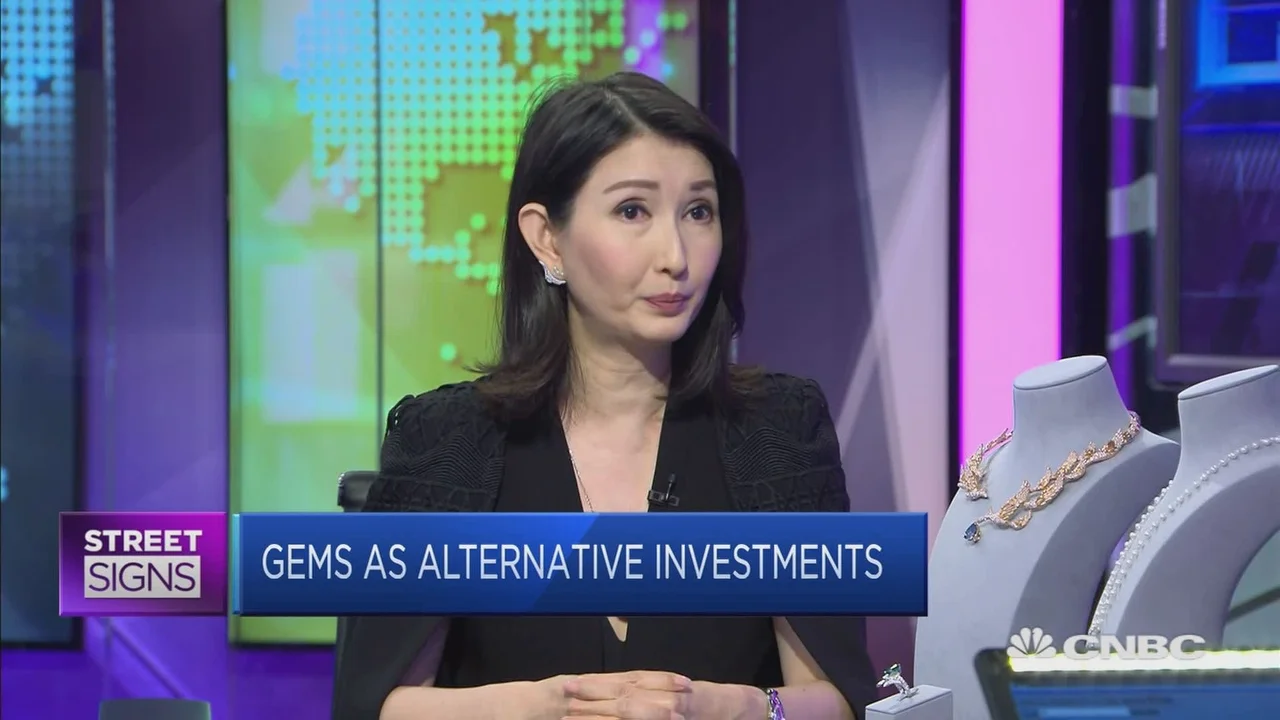Investing in Sapphires A Beginner's Guide to Southeast Asian Markets
a beginner's guide to investing in sapphires, specifically tailored for the southeast asian markets. learn the basics of sapphire investment and how to get started.

So, you're thinking about dipping your toes into the dazzling world of sapphire investment, specifically targeting the Southeast Asian market? Smart move! This region is a hotbed for gemstone trading, with a growing appreciation for these stunning blue beauties. Let's break down the basics and get you started on your sapphire investing journey.
Why Sapphires? Understanding the Allure for Southeast Asian Investors
Before we dive into the nitty-gritty, let's understand why sapphires are so appealing to investors in Southeast Asia. Several factors contribute to their popularity:
* **Cultural Significance:** Sapphires hold cultural significance in many Southeast Asian countries, often associated with royalty, wisdom, and good fortune. This inherent value boosts demand.
* **Growing Middle Class:** The burgeoning middle class in countries like Indonesia, Thailand, and Vietnam has increased disposable income, leading to a greater interest in luxury goods and investments like gemstones.
* **Tourism Hub:** Southeast Asia is a major tourist destination. Tourists often purchase sapphires as souvenirs or investments, further driving demand.
* **Diversification:** Savvy investors are always looking to diversify their portfolios. Sapphires offer a tangible asset that can hedge against economic uncertainty.
* **Relative Stability:** While gemstone prices fluctuate, high-quality sapphires tend to hold their value relatively well compared to other investments.
Navigating the Southeast Asian Sapphire Market Key Regions and Trends
The Southeast Asian sapphire market is diverse. Here’s a quick overview of key regions and trends:
* **Thailand:** A major hub for gemstone cutting, polishing, and trading. Bangkok is a crucial location for sourcing and selling sapphires.
* **Myanmar (Burma):** Historically known for producing some of the world's finest sapphires, particularly those with a rich, intense blue color. However, political instability can impact sourcing.
* **Sri Lanka (Ceylon):** Although not strictly Southeast Asian, Sri Lanka is a significant source of high-quality sapphires that are frequently traded in the region.
* **Vietnam:** An emerging market with a growing demand for sapphires, especially among the younger generation.
* **Singapore:** A sophisticated financial center that attracts high-net-worth individuals interested in investing in rare and valuable gemstones.
Trends to watch include the increasing demand for ethically sourced sapphires, the growing popularity of colored sapphires (e.g., pink, yellow, orange), and the rise of online gemstone trading platforms.
Sapphire Quality Factors The 4Cs for Southeast Asian Buyers
Understanding the 4Cs – Cut, Clarity, Color, and Carat – is crucial for assessing the value of a sapphire. Here’s how they apply to the Southeast Asian market:
* **Color:** This is arguably the most important factor. In Southeast Asia, intense, vibrant blues are highly prized. Look for sapphires with good saturation and even color distribution. Padparadscha sapphires (pinkish-orange) are also extremely desirable and command premium prices.
* **Clarity:** Clarity refers to the absence of inclusions (internal flaws) and blemishes (surface imperfections). While flawless sapphires are rare, look for stones with minimal inclusions that don't detract from their beauty or durability.
* **Cut:** A well-cut sapphire will maximize its brilliance and sparkle. The cut should be symmetrical and proportioned to allow light to reflect evenly throughout the stone.
* **Carat:** Carat refers to the weight of the sapphire. Larger sapphires are generally more valuable, but the other 3Cs are equally important. Don't sacrifice color or clarity for size.
Recommended Sapphire Products and Their Uses in Southeast Asia
Let's look at some specific sapphire products and their potential in the Southeast Asian market:
* **Ceylon Blue Sapphire Ring (3 Carat, VVS Clarity):**
* **Description:** A classic round-cut Ceylon blue sapphire set in a platinum ring with diamond accents. The vibrant blue color and high clarity make it a stunning piece.
* **Use Case:** A popular choice for engagement rings or anniversary gifts. The blue sapphire symbolizes loyalty and commitment.
* **Comparison:** Ceylon sapphires are generally more expensive than sapphires from other origins due to their reputation for exceptional quality.
* **Price:** Expect to pay around $8,000 - $12,000 USD, depending on the specific characteristics of the stone and the setting.
* **Burmese Star Sapphire Pendant (5 Carat):**
* **Description:** A cabochon-cut Burmese star sapphire pendant set in white gold. The star effect is a result of tiny needle-like inclusions that reflect light.
* **Use Case:** A unique and eye-catching piece of jewelry that can be worn for special occasions. The star sapphire is believed to bring good luck and protection.
* **Comparison:** Star sapphires are judged on the sharpness and clarity of the star. Burmese star sapphires are highly sought after for their distinct star effect.
* **Price:** Prices range from $5,000 - $10,000 USD, depending on the star's prominence and the sapphire's body color.
* **Padparadscha Sapphire Earrings (1.5 Carat Each):**
* **Description:** A pair of oval-cut Padparadscha sapphire earrings set in rose gold with a halo of diamonds. The rare pinkish-orange color makes them incredibly desirable.
* **Use Case:** A sophisticated and elegant accessory for formal events. Padparadscha sapphires are considered a symbol of romance and passion.
* **Comparison:** Padparadscha sapphires are among the rarest and most expensive sapphires. The color should be a delicate blend of pink and orange.
* **Price:** Expect to pay $15,000 - $30,000 USD for a pair of high-quality Padparadscha sapphire earrings.
* **Loose Yellow Sapphire (2 Carat, Sri Lanka Origin):**
* **Description:** A loose cushion-cut yellow sapphire from Sri Lanka. The vibrant yellow color is a result of trace elements of iron.
* **Use Case:** Can be used to create a custom piece of jewelry, such as a ring or pendant. Yellow sapphires are associated with prosperity and good health.
* **Comparison:** Yellow sapphires are generally more affordable than blue sapphires. Sri Lankan yellow sapphires are known for their brilliance.
* **Price:** Around $2,000 - $4,000 USD, depending on the intensity of the yellow color and the clarity.
* **Sapphire Beads Necklace (Multi-Color, 8mm Beads):**
* **Description:** A necklace featuring a mix of blue, pink, yellow, and green sapphire beads.
* **Use Case:** Suitable for casual and semi-formal wear, appealing to a younger demographic in Southeast Asia.
* **Comparison:** This offers a more affordable entry point into sapphire investment, focusing on variety and aesthetic appeal rather than individual gem quality. Ideal for those seeking a fashionable statement piece.
* **Price:** $800 - $1,500 USD, depending on the quality and variety of the sapphire beads.
Sourcing Sapphires Responsibly Ethical Considerations in Southeast Asia
Ethical sourcing is increasingly important in the gemstone industry. Consumers are becoming more aware of the social and environmental impact of their purchases. When investing in sapphires in Southeast Asia, consider the following:
* **Origin:** Trace the sapphire's origin to ensure it comes from a reputable source that adheres to ethical mining practices.
* **Fair Trade:** Support suppliers who prioritize fair labor practices and provide fair wages to miners and gemstone cutters.
* **Environmental Impact:** Choose suppliers who are committed to minimizing their environmental impact.
Tips for Beginner Sapphire Investors in Southeast Asia
* **Do Your Research:** Learn as much as you can about sapphires before investing. Understand the 4Cs, market trends, and ethical sourcing practices.
* **Work with Reputable Dealers:** Choose established and trustworthy gemstone dealers with a proven track record.
* **Get a Gemological Certificate:** Always obtain a gemological certificate from a reputable laboratory (e.g., GIA, AGTA) to verify the sapphire's authenticity and quality.
* **Start Small:** Begin with a small investment and gradually increase your holdings as you gain experience.
* **Consider Long-Term Investment:** Sapphire investment is typically a long-term strategy. Be patient and don't expect to get rich overnight.
* **Network:** Attend gemstone trade shows and connect with other investors and industry professionals.
Investing in sapphires in Southeast Asia can be a rewarding experience. By understanding the market, the quality factors, and the ethical considerations, you can make informed decisions and build a valuable gemstone portfolio. Good luck!
:max_bytes(150000):strip_icc()/277019-baked-pork-chops-with-cream-of-mushroom-soup-DDMFS-beauty-4x3-BG-7505-5762b731cf30447d9cbbbbbf387beafa.jpg)






